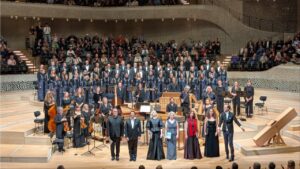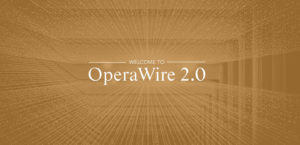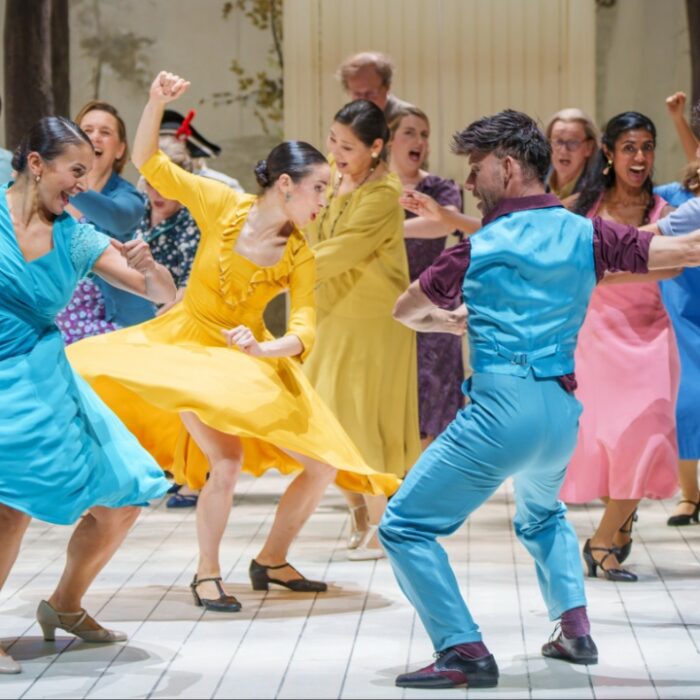
Elbphilharmonie Hamburg 2025-26 Review: Venus & Adonis / Dido & Aeneas
By Mengguang Huang(Photo: André Krieg)
To hear John Blow’s “Venus and Adonis” and Henry Purcell’s “Dido and Aeneas” in a single evening is to witness a moment of metamorphosis in English music. Antonius Adamske and his forces shaped a journey, tracing how English musical drama moved from Blow’s miniature masque of graceful restraint, to Purcell’s denser, more dramatically various opera, with persuasive coherence.
‘Venus & Adonis’ Highlights
In Blow’s “Venus and Adonis,” Adamske created an atmosphere of exquisite restraint — sorrow touched with serenity, emotion always held within a finely wrought frame. The small ensemble projected a soft, translucent sonority, with a basso continuo of particular warmth and soloistic precision. Each instrumental ritornello and dance interlude had a distinct personality, contributing to the miniature drama’s sense of delicacy and proportion.
A striking feature was the inventive percussion execution, handled here with imagination and taste. From the rustle of leaves and the faint tremor of the earth to the distant growl of the boar, these subtle effects conjured an Arcadian landscape that seemed to breathe within the music — as an organic extension of the pastoral world. Against this poised and natural setting, tragedy emerged not as rupture but as return, as if Venus’s grief were absorbed back into nature’s eternal cycle.
Dorota Szczepańska as Venus combined regal allure with maternal warmth, her phrasing already shading tenderness with foreboding. Opposite her, Florian Götz as Adonis, sung with a noble, centered baritone, radiated natural dignity—a mortal beloved caught between divine affection and human fragility. The opening French-style overture and first act unfolded with poised serenity, the lautten compagney Berlin drawing a sound world of gentle grace and soft-edged continuo. In the second act, the Mädchenchor Hamburg, as Cupid’s attendants, lent a youthful sparkle that perfectly matched the masque’s pastoral freshness. The final act reduced the forces to an intimacy: harp and plucking instruments tracing the lovers’ fragile exchange before Venus’s lament rose over the quiet breathing of a solo gamba. Szczepańska’s long lines ached with grief yet never succumbed to despair, and Götz’s Adonis met his fate with calm acceptance. The Monteverdi-Chor Hamburg closed the work in luminous balance—a serene return to nature’s embrace.
‘Dido & Aeneas’ Details
If Blow’s work was a study in balance and inward poise, Purcell’s “Dido and Aeneas” in the second half expanded that world into one of richer contrasts and deeper emotional diversity. Though similar in scale, Purcell’s opera possesses a far more intricate expressive design—moral ambiguity, psychological tension, and a sharper interplay of human and supernatural forces. Adamske’s interpretation preserved the same sense of control and clarity while allowing for greater dramatic breadth.
He again employed various percussion instruments to imaginative effect, this time to evoke vivid stage imagery—the murmuring of water at the opening of Act two, for instance, conjured both physical environment and inner unrest. Yet in certain moments these effects verged on excess. Still, the sense of theatrical immediacy was undeniable, and Adamske’s pacing maintained a compelling dramatic arc from the first act’s hesitant tenderness to the final descent into loss.
Vocally the cast revealed larger dramatic swings than in the Blow. Szczepańska as Dido was noble and inward, her “When I am laid in earth” was a sustained, unforced supplication whose repeating ground bass felt like the inexorable pulse of mourning. Florian Götz as Aeneas conveyed an earnest conflict between duty and desire. Hanna Herfurtner and Julia Kirchner, doubling as Belinda and the witches, provided sharp relief—their bright, agile voices tracing the opera’s shifting moral terrain from loyal counsel to gleeful malice.
Franziska Gottwald as Sorceress commanded the stage with deep mezzo-soprano authority, though the sense of true menace in Purcell’s world—so unlike Blow’s serene Arcadia—felt only lightly touched. Markus Brutscher as Spirit and Sailor brought incisive clarity and humor to their brief scenes, anchoring the opera’s human dimension.
The choruses were fully integrated into the drama. The Monteverdi-Chor’s energy and diction gave sculptural weight to each scene — from the sailors’ exuberance to the mourners’ restraint. Their movement and dance interaction with sailors on stage transformed a semi-staged experience alive with gesture and immediacy.
Adamske’s achievement lay in tracing the continuum between these twin operas without ever blurring their individuality. To hear them in one evening was like viewing two paintings side by side in a gallery: Blow’s “Venus and Adonis” recalled the luminous harmony of a Claude Lorrain landscape, Purcell’s “Dido” spoke in the darker, more ambiguous language of Nicolas Poussin—its passions ordered yet uncontainable. One bathed in balanced light, the other charged with moral tension, together illuminating the English Baroque’s brief but radiant flowering.



